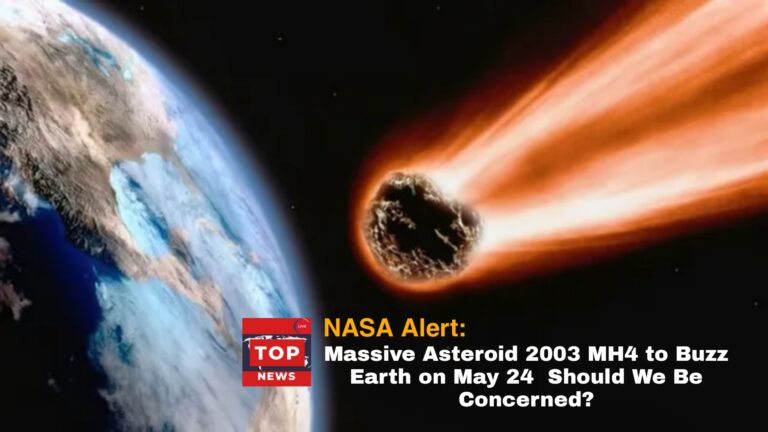
A colossal asteroid nearly the size of three football fields is set to make a close approach to Earth on May 24, 2025. Named Asteroid 2003 MH4, the space rock measures an estimated 335 meters in diameter and is barreling through space at a staggering speed of 14 kilometers per second—fast enough to cover the distance from Delhi to Mumbai in under a minute.
While the asteroid poses no immediate threat to Earth, its size and the relatively close distance of its approach—6.68 million kilometers—has earned it the classification of a Potentially Hazardous Asteroid (PHA) by NASA. This status is reserved for space objects that are larger than 150 meters and come within 7.5 million kilometers of Earth’s orbit.
Close, But Not Calamitous
To the average person, 6.68 million kilometers may sound like a safe buffer. But in cosmic terms, that’s uncomfortably close—about 17 times the distance between Earth and the Moon. The size and velocity of 2003 MH4 demand close observation, even though calculations currently indicate it will fly safely past our planet.
“This flyby is not a cause for alarm, but it’s a valuable reminder of why continuous monitoring of near-Earth objects (NEOs) is vital,” a NASA spokesperson said. “Tracking their paths and understanding their behavior is essential to planetary defense.”
Why Scientists Are Watching Closely
Asteroid 2003 MH4 belongs to the Apollo group of asteroids—Earth-crossing space rocks that orbit the Sun and frequently come close to our planet. These asteroids can have their orbits slightly altered by gravitational interactions with Earth or larger planets like Jupiter. Even small changes—such as those caused by the Yarkovsky effect, where sunlight alters the asteroid’s spin and path—could increase the chance of a future encounter.
The asteroid completes an orbit around the Sun every 410 days, meaning it will have repeated opportunities to approach Earth in the future. That frequency makes ongoing surveillance especially important.
How NASA Monitors the Threat
The task of monitoring potentially hazardous objects falls to NASA’s Center for Near-Earth Object Studies (CNEOS), located at the Jet Propulsion Laboratory (JPL) in California. Using radar, telescopes, and orbital simulation software, scientists are able to map an asteroid’s trajectory well into the future. This capability allows them to identify even slight shifts in orbit that could affect future encounters with Earth.
These data points are more than scientific curiosity—they are critical tools in crafting future planetary defense strategies, such as deflection missions or early-warning systems.
A Cosmic Wake-Up Call
Although Asteroid 2003 MH4 will sail safely past Earth next week, its visit serves as a stark reminder of our planet’s exposure in a dynamic and unpredictable solar system. Events like this emphasize the need for continued investment in advanced telescopic technology, orbital modeling, and international cooperation to develop a robust defense infrastructure.
As Earth’s celestial visitor speeds by on May 24, it won’t leave a mark—but it leaves us with a lasting message: vigilance is our best protection in the vastness of space.